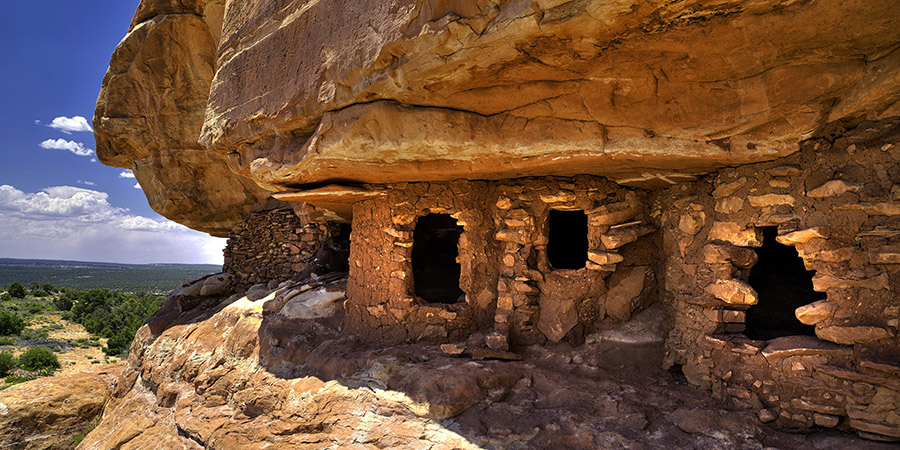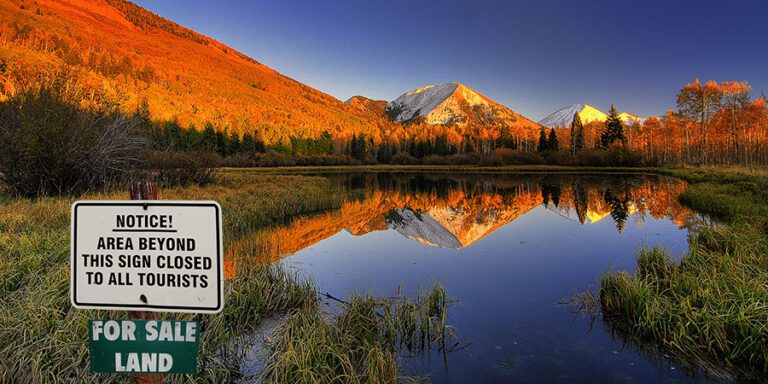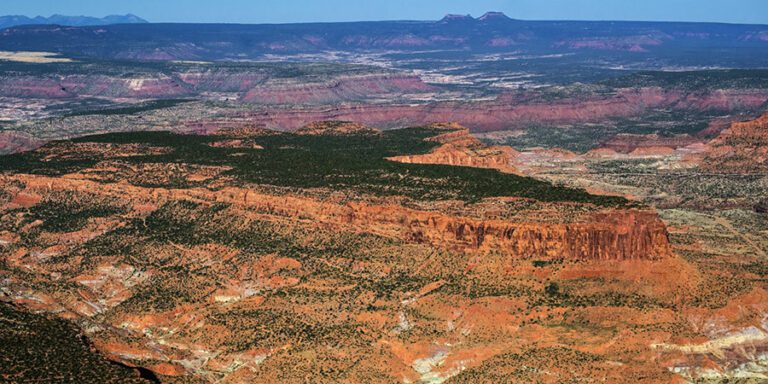
A review of national monuments threatens beloved natural and cultural landscapes protected under the Antiquities Act.
Ping-pong. Political football. These terms have been applied to two beloved national monuments in Utah since President Trump attempted to unlawfully shrink Bears Ears by 85% and Grand Staircase-Escalante by almost half in 2017. Tribes, outdoor businesses, and conservation groups including the Grand Canyon Trust challenged those actions in 2017 and the cases remain pending in federal court. President Biden restored the boundaries of both monuments in 2021, but shortly after the 2024 presidential election, Washington D.C. insiders began bouncing the ping pong ball again.
Early threats to slash Bears Ears and Grand Staircase, again
In November 2024, the New York Times reported that the boundaries of Bears Ears and Grand Staircase-Escalante would be immediately redrawn to reflect Trump’s 2017 changes when the new president took office.
But direct orders eviscerating Bear Ears and Grand Staircase-Escalante hadn’t yet materialized among the hundreds of presidential actions taken since Inauguration Day. That was until February 3, 2025, when the scale and scope of the threat to national monuments swelled substantially. Beyond just Bears Ears and Grand Staircase-Escalante, a newly announced national monuments review could potentially target every presidentially designated national monument managed by the U.S. Department of the Interior where new mining and oil and gas leasing are currently prohibited.
National monument review announced
On his first full day in office, February 3, 2025, Secretary of the Interior Doug Burgum issued Secretarial Order 3418, “Unleashing American Energy.” The order, among other things, sets a February 18, 2025 deadline for agency staff to revisit and outline steps to revise national monuments. The stated goal is to make more public lands available for drilling and mining.
Beyond Bears Ears and Grand Staircase, other national monuments could be on the table as well, including Baaj Nwaavjo I’tah Kukveni – Ancestral Footprints of the Grand Canyon National Monument, Arizona’s newest national monument.
Unwanted, unlawful national monuments review
Gutting monuments would be as unpopular as it would be unlawful. Polling we commissioned in December 2024 of Arizona and Utah voters demonstrated just how popular national monuments are, and how unpopular messing with them would be. Nearly two-thirds (65%) of Utah voters support keeping the number and current size of existing national monuments. Four in five Arizona voters across party lines support Baaj Nwaavjo I’tah Kukveni national monument, up from 75% in 2023. Support for Bears Ears and Grand Staircase-Escalante is strong in Utah, with 71% of voters in favor of keeping Bears Ears and 74% in favor of keeping Grand Staircase-Escalante as national monuments.
We may or may not see the “action plans” that are developed by February 18. Anti-public lands politicians know that tampering with national monuments is wildly unpopular. During the first Trump administration, nearly 3 million people commented in opposition to shrinking or eliminating national monuments. Perhaps that’s why Secretary Burgum’s order listed only the U.S. Code designation for the Antiquities Act instead of naming the law transparently.
When asked by a reporter, an Interior Department spokesperson claimed “that it would be ‘pre-decisional’ to make any assumption about the outcome of any of the reviews required under Burgum’s order.”
What does this mean for new management plans at Bears Ears and Grand Staircase-Escalante?
The new review comes on the heels of new management plans for both Utah monuments. These carefully developed plans promise a bright future for Bears Ears and Grand Staircase-Escalante. The plan for Bears Ears represents a historic achievement for conservation by infusing traditional Indigenous knowledge into public lands management. And it’s the result of a three-year-long effort among the five Bears Ears Commission tribes — The Hopi Tribe, Navajo Nation, Ute Mountain Ute Tribe, Zuni Tribe, and Ute Indian Tribe of the Uintah and Ouray Reservation — and the U.S. Bureau of Land Management and the U.S. Forest Service.
Voters strongly support this collaborative work with tribes. An overwhelming 89% of Utah voters agree that Native American tribes should play a central role in protecting and managing their ancestral lands. And four in five Utah voters say the current administration should keep the cooperative agreement with tribes regarding how Bears Ears is managed in place.
Attacks on the Antiquities Act
The attempted assault on our national monuments isn’t just something the Trump administration is contemplating. In Congress in January, , Representative Celeste Maloy, R-Utah, and Representative Mark Amodei, R-Nevada, introduced a bill in the house that would repeal the section of the Antiquities Act of 1906 that allows presidents to designate new national monuments. Senator Mike Lee, R-Utah, introduced a companion bill in the Senate. Called the “Ending Presidential Overreach on Public Lands Act” (S. 220/H.R. 521), the bill disregards how Utahns and Arizonans feel about national monuments. December 2024 polling found that 75% of Utah voters and 88% of Arizona voters support presidents’ ability to protect public lands as national monuments. We’ll let you know when there’s an opportunity to register your opposition to the bill.
Utah’s public lands foes stumble
The news is not all doom and gloom for our public lands. Utah recently asked the Supreme Court to consider a lawsuit that would have sold off more than 18.5 million acres of national public lands in Utah. But on January 13, 2025, the Supreme Court declined to hear Utah’s case. While we expect Utah public lands foes to file similar litigation in district court, such a lawsuit is sure to be unpopular in Utah, where voters love their national public lands. In fact, 87% of Utah voters say they have visited national public lands in the past year. It’s time for Utah’s politicians to listen to voters and leave these lands and all national monuments alone.




